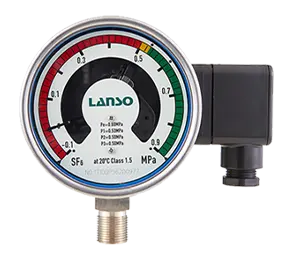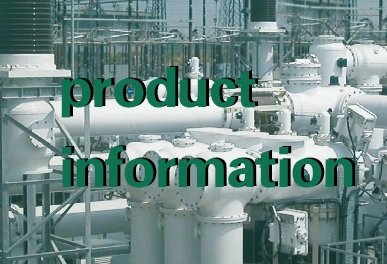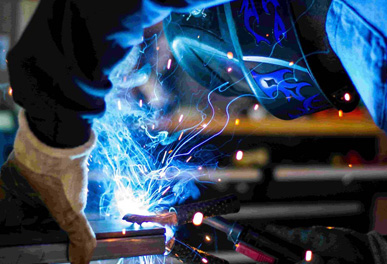Calibration principle of SF6 gas density relay
Temperature compensation principle of density relay
SF6 gas has excellent insulation and arc extinguishing properties, making it a natural "cold field champion." The insulation and arc extinguishing properties of SF6 gas depend on its density, according to the ideal gas equation PV=nRT.
The density relay of SF6 gas compensates for the influence of temperature changes. In other words, even with the same amount of SF6, the displayed pressure remains constant despite temperature variations. How is the compensation for temperature changes achieved?
Simply put, temperature changes cause changes in the Bourdon tube and bimetallic strip, which cancel out each other's effects, keeping the pointer of the gauge unchanged.
In a closed container, the pressure of SF6 gas at a certain temperature can represent the density of SF6 gas. For the sake of standardization, it is customary to use the pressure of SF6 gas at 20°C as the reference value. During on-site calibration, the measured pressure values at different ambient temperatures need to be converted into their corresponding values at 20°C in order to assess the performance of the SF6 gas density relay. Calibration is achieved by inflating and deflating the relay to achieve overpressure value, alarm value, and locking value.
When the pointer of the SF6 density relay is at zero, slowly and uniformly inflate the relay. When the SF6 density relay triggers a locking (alarm) action, record the pressure value at the current ambient temperature and convert it to the equivalent pressure value at 20°C. This equivalent pressure value represents the locking (alarm) response value of the SF6 density relay.
Under ambient temperature, when the internal pressure value of the SF6 density relay is higher than the alarm (locking) response value, start slowly and uniformly deflating. When the SF6 density relay sends an alarm (locking) signal, record the pressure value at the current ambient temperature and convert it to the equivalent pressure value at 20°C. This equivalent pressure value represents the alarm (locking) value of the SF6 density relay.
Testing technique of SF6 gas density relay
Open the instrument box cover and take out the test tubing and wiring from the accessory package. Connect the instrument's grounding wire, temperature sensor connection wire, signal acquisition wire, and test tubing in order.
Connect the SF6 gas density relay to be calibrated, the pressure gauge or density gauge to be tested, and the instrument's test interface. Check and confirm that all connections are correct, then turn on the instrument's power to enter the measurement interface.
Enter the density relay calibration function, set the test parameters according to the rated parameters of the SF6 density relay to be calibrated, check the test parameters for accuracy, and click "Test." The instrument will automatically complete the test.
Table comparing the indication accuracy level and allowable error of the density relay
level of accuracy | Allowable error (calculated as a percentage of the range) |
20℃±1℃ | -25℃~+60℃ |
|
1.0 | ±1.0% | ±2.5% |
|
1.6 | ±1.6% | ±2.5% |
|







